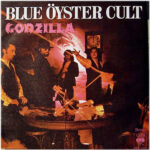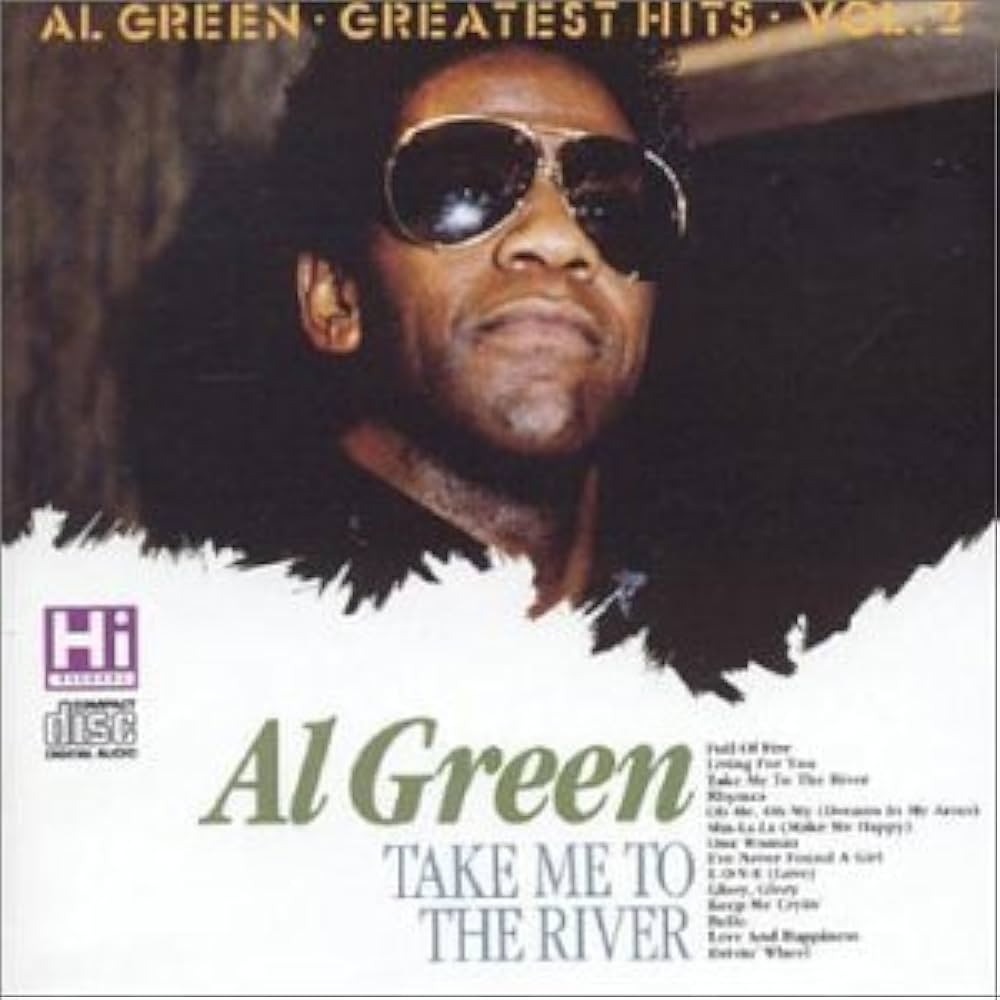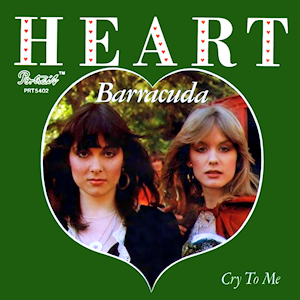 Few songs in the annals of rock music are as instantly recognizable, hilariously epic, and defiantly heavy as Blue Öyster Cult’s “Godzilla.” Released in 1977 on their album Spectres, the track is a masterful fusion of hard rock swagger, tongue-in-cheek humor, and monster-movie awe. In just over three minutes, Blue Öyster Cult (BÖC) captured the imagination of music fans, kaiju enthusiasts, and pop culture aficionados alike, creating a song that has endured for nearly half a century as both a rock anthem and a cultural touchstone.
Few songs in the annals of rock music are as instantly recognizable, hilariously epic, and defiantly heavy as Blue Öyster Cult’s “Godzilla.” Released in 1977 on their album Spectres, the track is a masterful fusion of hard rock swagger, tongue-in-cheek humor, and monster-movie awe. In just over three minutes, Blue Öyster Cult (BÖC) captured the imagination of music fans, kaiju enthusiasts, and pop culture aficionados alike, creating a song that has endured for nearly half a century as both a rock anthem and a cultural touchstone.
At first glance, “Godzilla” may appear as a novelty—a hard rock homage to a giant Japanese monster—but beneath the playful lyrics and monstrous imagery lies a song brimming with tight musicianship, creative ambition, and an unmistakable sense of fun that never undercuts its rock credibility. It’s a testament to BÖC’s unique ability to mix humor, horror, and heavy riffs without losing artistic integrity.
Blue Öyster Cult: Masters of the Macabre and the Melodic
To understand the genius of “Godzilla,” one must first appreciate the band behind it. Formed in Long Island in 1967, Blue Öyster Cult developed a reputation for blending heavy metal riffs with cerebral lyrics, esoteric themes, and an almost theatrical stage presence. They were a band that could make you think, make you shiver, and make you headbang all in the same song.
By the mid-1970s, BÖC had already scored commercial hits like “(Don’t Fear) The Reaper” and “Burnin’ for You.” With Spectres, the band was exploring both serious and playful territory, experimenting with synths, hard rock dynamics, and storytelling. “Godzilla” emerged from this period of creative confidence, combining their love of monsters, comic book drama, and rock ’n’ roll theatrics.
The band’s lineup at the time—Eric Bloom on vocals and rhythm guitar, Donald “Buck Dharma” Roeser on lead guitar, Allen Lanier on keyboards, Joe Bouchard on bass, and Albert Bouchard on drums—was firing on all cylinders. Each musician brought precision, character, and energy to the track, making “Godzilla” a cohesive powerhouse of a rock song.
Lyrics: A Monster of Myth and Metal
The lyrics of “Godzilla” are playful, yet they capture the scale and chaos of the iconic Japanese monster. Written by Donald Roeser and Eric Bloom, the song recounts Godzilla’s path of destruction, blending humor with cinematic imagery:
“With a purposeful grimace and a terrible sound / He pulls the spitting high-tension wires down.”
BÖC treats Godzilla with both reverence and wit. The monster is terrifying, yes—but he is also almost superhero-like in his indestructible stature. The lyrics exaggerate his power, describing cities flattened and military forces vanquished, creating a sense of spectacle akin to the original 1954 film.
At the same time, the song’s humor is self-aware. Lines like “History shows again and again / How nature points out the folly of men” nod to the environmental and cautionary themes of the original Godzilla films, while never taking itself so seriously that it becomes a lecture. It’s a delicate balance of parody and homage, and BÖC nails it.
Riffs, Rhythm, and Rock Majesty
Musically, “Godzilla” is quintessential hard rock. From the opening riff, Donald “Buck Dharma” Roeser’s guitar dominates with precision and flair, delivering a heavy, chugging motif that perfectly matches the imagery of a towering monster stomping through a city. The riff is immediately memorable, driving the song forward while leaving space for Eric Bloom’s commanding vocals to soar.
The rhythm section of Joe and Albert Bouchard locks into a punchy, relentless groove. Albert’s drumming is tight and propulsive, perfectly accenting the dramatic guitar stabs, while Joe’s bass provides a grounded low end that adds weight to the track. Allen Lanier’s keyboard textures are subtle but effective, giving the song a cinematic quality that evokes the monster-movie origins of Godzilla without ever overwhelming the guitar-driven core.
Buck Dharma’s guitar solo is a highlight, a precise yet playful flourish that captures the grandeur and menace of the monster. It’s a solo that doesn’t just show technical skill—it tells a story, moving the listener through the chaos and power of Godzilla’s rampage.
Cultural Context: Rock Meets Kaiju
When “Godzilla” was released in 1977, Godzilla was already a global icon. The monster had appeared in dozens of films over two decades, representing both post-war anxieties and environmental cautionary tales. BÖC tapped into this cultural currency, merging the fascination with monsters with the energy and rebellion of hard rock.
The timing was perfect. The late ’70s saw the rise of arena rock, concept albums, and theatrical stage shows. Audiences were receptive to music that entertained as much as it rocked, and “Godzilla” delivered on both fronts. It also reflected BÖC’s broader appeal: they were serious musicians who could be serious about absurdity, a combination that made them stand out among their peers.
The song’s continued relevance is also tied to Godzilla’s enduring popularity. As the monster evolved—from the original kaiju films to the Hollywood blockbusters of the 1990s, 2000s, and 2010s—BÖC’s song remained a definitive rock tribute. Its riffs, lyrics, and energy have become a staple of monster-themed media and rock playlists alike.
The Humor Factor
One of the defining elements of “Godzilla” is its humor. Unlike many hard rock tracks of the era, which leaned into aggression, rebellion, or mysticism, “Godzilla” embraces absurdity without sacrificing intensity. The band clearly enjoys themselves, injecting wit into the lyrics, riffs, and vocal delivery.
Humor in rock music is tricky—too much, and it becomes novelty; too little, and it falls flat. BÖC strikes the perfect balance, giving the listener a monster-sized dose of fun while keeping the song firmly rooted in heavy rock credibility. This balance is a big part of why “Godzilla” has endured—it’s just as enjoyable for headbangers as it is for casual fans or fans of campy monster cinema.
Performance and Legacy
“Godzilla” quickly became a live favorite for Blue Öyster Cult. The song’s driving riff, dynamic vocal lines, and audience-friendly humor make it perfect for concert performances. Over decades, it has remained a staple in their setlists, a moment of joy and spectacle in an otherwise serious catalog.
Its influence extends beyond BÖC. Countless rock and metal bands cite the song as inspiration for blending narrative, humor, and hard-hitting riffs. It’s been covered, referenced, and sampled in numerous media, reinforcing its status as a cultural touchstone.
The song’s riff in particular has become iconic—a sonic shorthand for unstoppable force and heavy rock energy. Guitarists often cite it as a prime example of how simplicity, precision, and timing can create a riff that is both memorable and powerful.
The Enduring Appeal
So why does “Godzilla” remain so beloved nearly 50 years after its release? Part of it is pure fun—the song is undeniably enjoyable, easy to sing along to, and infused with a sense of playful theatricality. Part of it is musicianship: the band delivers a tight, high-energy performance that never feels forced, with riffs, rhythms, and solos that stand up to repeated listening.
But perhaps the greatest factor is imagination. “Godzilla” invites the listener into a world of cinematic chaos, where monsters reign and rock rules all. It is escapism with edge, humor with heft, and storytelling with riffs. Few songs can claim to capture the grandeur of a monster movie, the energy of hard rock, and the charm of self-aware humor all at once—but BÖC did it.
Modern Relevance
In recent years, “Godzilla” has continued to find new audiences. With the resurgence of interest in kaiju films—culminating in the Hollywood Godzilla and King Kong films—BÖC’s anthem has been rediscovered by younger listeners. Its riffs are often cited in guitar tutorials and its lyrics in pop culture articles, demonstrating that the song’s energy and creativity are timeless.
The track also serves as a bridge between musical generations. Fans of classic rock, heavy metal, and even video game and movie soundtracks can appreciate it for different reasons, proving the versatility and reach of BÖC’s creativity. “Godzilla” is a song that refuses to grow old, much like the monster it celebrates.
Conclusion: Rock’s Monstrous Masterpiece
“Godzilla” by Blue Öyster Cult is more than just a fun tribute to a giant monster—it’s a microcosm of the band’s genius. It blends humor, musicianship, narrative, and spectacle into a three-minute rock anthem that has captivated audiences for decades. From the punchy riffs and thunderous drums to the clever lyrics and commanding vocals, the song is a masterclass in how rock music can entertain, impress, and endure all at once.
It stands as a testament to BÖC’s ability to balance seriousness and playfulness, technical skill and accessibility, music and mythology. “Godzilla” is rock’s own atomic monster: larger than life, unstoppable, and impossible to ignore.
Every time the iconic riff kicks in, every time the lyrics recount the chaos of the unstoppable beast, the listener is reminded that great rock music doesn’t just sound powerful—it feels monumental. Blue Öyster Cult captured that feeling perfectly, creating a song that is, quite simply, monstrous in the best possible way.
In the end, “Godzilla” remains a reminder that rock and roll can be epic, fun, and unforgettable all at once—a true testament to the imagination, skill, and audacity of Blue Öyster Cult. It is, in every sense, a song that rocks as hard as the monster stomps.


